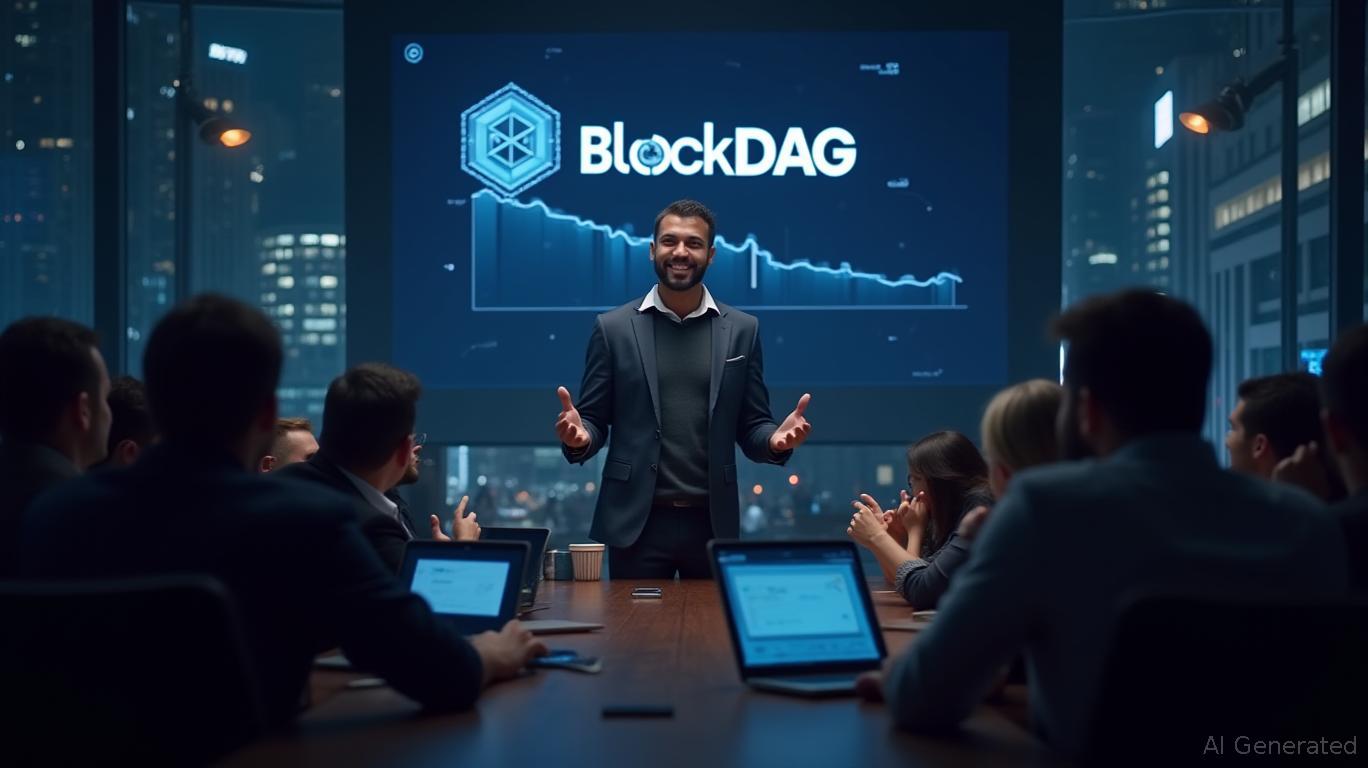By late 2025, the cryptocurrency sector is undergoing a significant transformation, with BlockDAG (BDAG) capturing widespread attention through its
unprecedented innovations
, surpassing newer contenders such as
Bitcoin
Hyper
and Snorter
Token
. Having sold more than 27 billion tokens and attracted 4,500 developers to create decentralized applications (dApps), BlockDAG is emerging as a foundational force in the next era of Web3. Its hybrid Directed Acyclic Graph (DAG) and Proof-of-Work (PoW) framework is designed to address scalability issues.
Chainlink (LINK) is further cementing its position as a critical infrastructure for on-chain finance, having recently incorporated S&P Global Ratings' Stablecoin Stability Assessments (SSAs) into its DataLink platform, as detailed in a
CoinEdition article
. This partnership delivers real-time risk analytics to over 2,400 financial organizations, helping them comply with regulatory demands under the U.S. GENIUS Act. At the same time, Render (RNDR) is expanding its AI computing power through RNP-021, utilizing enterprise-level GPUs such as the
NVIDIA
H200 to satisfy the rising need for decentralized rendering. Experts anticipate RNDR could reach $6–$7 by the end of 2025, reflecting the increasing appetite for AI-powered blockchain solutions.
BlockDAG's testnet has reached 1,400 transactions per second (TPS), marking a 75% improvement over previous records, and aims to achieve 15,000 TPS at launch, according to a
FinanceFeeds article
. The project’s compatibility with the EVM and its X1 mobile application, which already boasts 3.5 million users, make it easier for both developers and miners to participate. With over 20,000 X10–X100 miners sold, BlockDAG is building a decentralized ecosystem ready for widespread adoption. The project's roadmap updates and GENESIS DAY details, set to be discussed during the October 24 Binance AMA, have generated considerable interest.
While BlockDAG is focused on infrastructure, Snorter Token (SNORT) is gaining momentum among meme enthusiasts with its Telegram-based trading bot. The project features automated token sniping and MEV-resistant swaps, appealing to retail traders aiming to compete with larger investors. Analysts believe SNORT could climb by 767% before the year ends, though its speculative appeal stands in contrast to BlockDAG’s practical approach. Some reports even highlight Snorter as a possible
Solana
standout, as
Bitcoinist reports
. Likewise, Bitcoin Hyper is working to boost Bitcoin’s scalability through a Layer 2 solution that incorporates Solana’s Virtual Machine (SVM), but its progress is modest compared to BlockDAG’s achievements.
With stablecoins gaining influence and economic uncertainty persisting, projects offering real-world utility are attracting more attention. Chainlink’s institutional-grade data verification, Render’s AI infrastructure growth, and BlockDAG’s scalability advances all illustrate this movement. The project’s mix of technical progress, developer engagement, and active community has drawn parallels to early
Ethereum
, with some analysts predicting it could reach a top-25 market cap by 2026.
